Happy Wednesday everyone.
Thanks for understanding that I needed a break. It just so happens that my daughter’s birthday is on December 23rd (she turned 21 this year!), so it’s extra-important for me to focus on family around Christmas. Now I’m ready to re-engage and finish out 2023 strong. Let’s get things started with a roundup of the most important items we came across in the last week or so.
Europe is showing us the way: As Portland hits yet another grim traffic death milestone, it’s time for us to try something decidedly different. This article illustrates examples of how some major cities are fighting back against cars — and actually making progress. (The Guardian)
Nationalize Greyhound: What if the federal government ran intercity bus service, made stations as common as post offices, and gave bus lines priority on the interstate freeway network? (Jacobin)
If drivers can, they will: This deep dive into NYC bike lane design shows that “protected” bike lanes must be aggressively anti-car enough so that drivers cannot make selfish decisions that impact bike riders. (Streetsblog NYC)
Opening doors to cycling: Portland doesn’t have nearly as many door-zone bike lanes as Los Angeles, but we still have too many and have room for improvement when it comes to the prevention of dooring. (LA Times)
The rules have changed: There’s a new Manual on Uniform Traffic Control Devices (MUTCD) and it’s getting warmish reviews from cycling and transportation reform advocates. (Streetsblog USA)
Winter cycling capital of the world: If you need inspiration (or argument ammunition) when it comes to winter cycling, look no further than the Finnish city of Oulo, where cycling shines in snowy conditions. (BBC)
Spain’s green loop: Before I came across this article (thanks Galen!), I didn’t know there was a “green ring” around a city in Spain and that it was implemented as part of an effort to reduce car use. (The Guardian)
Bye bye Bird(e-scooters): It’s a good thing that the Portland Bureau of Transportation won’t permit Bird e-scooters anymore, because the company has filed for bankruptcy and owes money to more than 300 cities. (Quartz)
Thanks to everyone who sent in links this week. The Monday Roundup is a community effort, so please feel free to send us any great stories you come across.


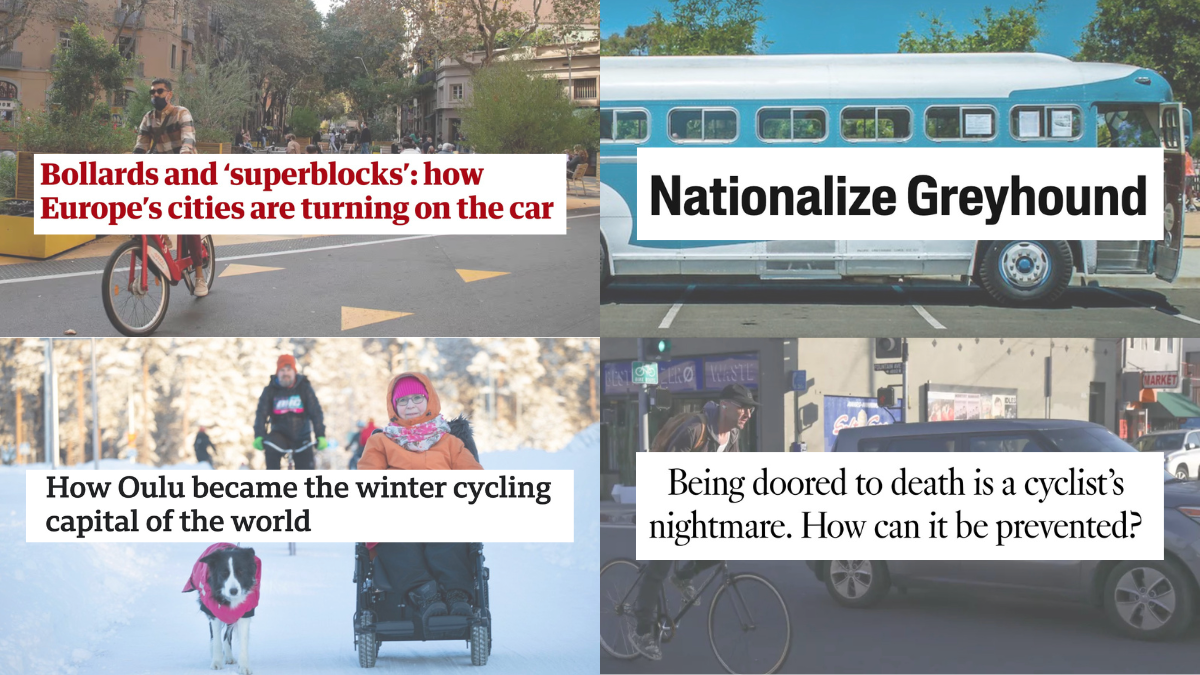
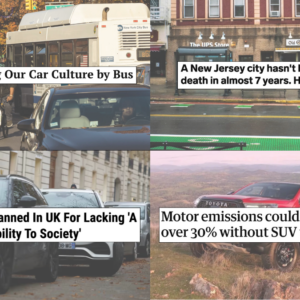
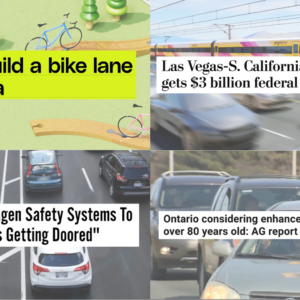
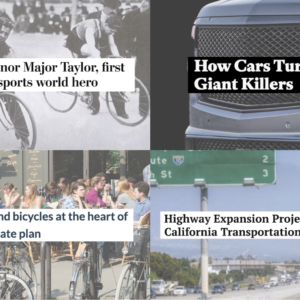
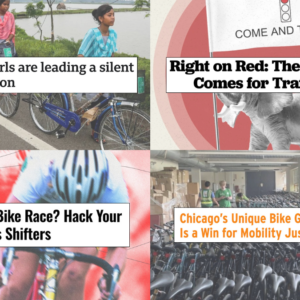
Thanks for reading.
BikePortland has served this community with independent community journalism since 2005. We rely on subscriptions from readers like you to survive. Your financial support is vital in keeping this valuable resource alive and well.
Please subscribe today to strengthen and expand our work.
From the “Nationalize Greyhound” article:
The USPS is not financially self sufficient, their loss (2023 10-K) in the 2023 fiscal year was $6.5B and they can’t make the necessary payments into their pension system, their current unfunded pension liabilities are nearly $100B.
For several years the USPS was financially handicapped by a legal requirement that workers pensions be prefunded. That’s not to say that businesses should not be responsible stewards of retirement plans, but if we require it to be a profit making business it should be on a level playing field with its competitors.
The current Postmaster General, when appointed, was the owner of a business competing with the Post Office.
That prefunding was in effect for 10 years starting in 2007 and they made 4 payments and defaulted on the remaining 6. I don’t know if it was a reasonable structure, but given that the unfunded liabilities are now close to $100B (about 3x as bad as the entire state of Oregon), it looks like it was an attempt at being financially prudent.
Not to derail the thread, but a massive portion of the USPS financial liability is due to a law passed in 2006 by GOP congress to saddle it with pre-paying pension liabilities into the future. This doesn’t exist for any other federal agency or, very likely, for any private business entity anywhere. It was put in place to set the USPS to fail with the endgame being privatization. A bi-partisan bill to remove this unreasonable burden passed with overwhelming support in the congress but was shot down in the GOP controlled Senate because it did not fit their agenda to privatize anything they can get their hands on.
From the link.
“The unreasonable prefunding mandate has threatened the survival of the USPS and placed at risk vital services for the millions who rely on it,” said Rep. Peter DeFazio, D-Ore., one of the bill’s sponsors. “The prefunding mandate policy is based on the absurd notion of paying for the retirement funds of people who do not yet, and may not ever, work for the Postal Service.”
https://www.nbcnews.com/politics/congress/lawmakers-aim-dissolve-draconian-law-placed-heavy-financial-burden-postal-n1256497
If the USPS operated savings banks like the government postal services in France and Germany do, for anyone but especially for the unbanked homeless and inner-city poor, you can bet it would eventually make a profit – but that’s the last thing the US Congress wants, a profitable government entity – just look at ConRail after it started making a profit – sold at a discount to CSX and Norfolk & Southern. Congress got really upset when the feds made a huge profit on distressed Fanny Mae securities and GM stock after the recovery from the long recession.
Meanwhile, those who most oppose a profitable government are the ones who most often say government should be run like a business. Clearly they’re selective about what parts of business they apply to which arguments. What a jacked up political climate in which we live.
If a nationalized bus service could be “financially self-sufficient,” Greyhound wouldn’t be having the problems it’s having right now.
A federal bus service that provides public transit service to small communities all across America may well be good idea, but it will require heavy subsidies. Plus, it already exists, although maybe not on a large enough scale. Amtrak already has its Thruway motorcoach service to take its passengers where rails don’t go. Greyhound already serves some of those routes. Taking over Greyhound would probably just mean expanding Amtrak Thruway service.
Nationalizing Greyhound could result in what happened to a nationalized Amtrak: more shuttered stations, purposeful rerouting for greater inconvenience and focus on convincing passengers that flying — or road tripping in a car of one’s own — are the only ways to go.
In a country and economy which do not have the public’s best interests at heart, be careful what you wish for.
Remember those gorgeous stations that Amtrak built in the late 1970s? Tacoma, Washington closed that one.
Tacoma Union Station was a victim of its own poor location next to a major intermodal rail yard not some conspiracy against passenger rail. While it was in a convenient downtown location for passengers it was awful for railroad operations leading in and out of the intermodal yard. Yes the replacement Amtrak station used for decades was awful but the new Tacoma Dome station is a 100% improvement. It’s located on the Point Defiance bypass alignment that is almost exclusively for passenger trains bypassing huge freight bottlenecks & delays.
It’s an improvement to be sure but it’s still not very walkable, getting to/from the station is a pain
Yes. The new Tacoma station is also adjacent to a gargantuan car parking garage.
At present, the Portland Greyhound ‘terminal’ is a sign on the curb NW of the Amtrak station. No ticket window (the office is blocks away), no baggage handling, no bus shelter, not even a bench. We’re pretty far down the road of gutting intercity bus service.
I agree. How would nationalizing Greyhound affect private motorcoach companies? They were hit so hard during in the past several years. Airlines received loads of cash.
Greyhound and other similar intercity bus services do actually receive subsidies already, but obviously not on the same level as airlines or even poor old Amtrak. Both the USDOT FTA (Federal Transit Administration) and a lot of states subsidize “rural” bus services, particularly for towns without Amtrak or airline service, but most of the bus companies are regional services that are much smaller than Greyhound or Bolt. There are also some state-owned public transit services such as in Connecticut and North Carolina (PART). The State of Connecticut runs the public city buses for Hartford, New Haven, and most other cities into a combined urban & rural service – you can buy a pass that effectively serves the entire state (not that it’s all that big, of course.) The Piedmont Authority for Regional Transportation in central North Carolina operates a public inter-city bus service connecting Winston-Salem, High Point, Greensboro, Durham, and Chapel Hill to numerous small towns and county seats in the region, with a combination of city, county, state, & federal subsidies and a relatively cheap $2.50 fare – you can even take your bike.
The Barcelona superblocks and “green axis” are interesting approaches to reclaiming our streets. I’ve thought a lot about how to “harden” blocks against cut through traffic, especially near the intersections of major streets. The super block approach would be great around some of our major intersections. And, imagine if we turned something like 82nd into a giant park via the green axis treatment! That would be truly transformative.
Finland is one of the most bicycle-oriented countries in the world. Winter and summer. Urban and rural. Youth, adults, retirees. It’s largely unsung. It’s good to see it getting its day in the sun in the winter bicycling article.
I visited Finland in 2016. Of the 25 European countries I have bicycled through, Finland has quite a few superlatives.
Other countries are also impressive, but Finland wins hands down for the best overall infrastructure.
Check out the density and overall coverage of off-street paths in Oulo. (I haven’t been here, but this looks like the parts of Finland I visited)
https://www.opencyclemap.org/?zoom=14&lat=65.02214&lon=25.48186&layers=B0000
https://www.google.com/maps/@65.0208841,25.4969929,13.65z/data=!5m1!1e3?entry=ttu
A few examples.
https://maps.app.goo.gl/6MNHpekrVc5NA7dU8
https://maps.app.goo.gl/MNk2Pdszz43VAxpH9
https://maps.app.goo.gl/joCkPw84B171AdzH9
Also, check out the bike paths in Helsinki (blue lines)
https://www.opencyclemap.org/?zoom=14&lat=60.19873&lon=24.93435&layers=B0000
An example
https://maps.app.goo.gl/ADvWiB1VDL8mynR6A
I spent a night in the village of Iittala. Completely separated infrastructure here, and it seemed half of the village travelled by bicycle.
https://www.opencyclemap.org/?zoom=14&lat=61.09255&lon=24.14033&layers=B0000
An example
https://maps.app.goo.gl/3R7DgJZfmbrJv22S7
You can go anywhere in Finland on OpenCycleMap and see a deliberately created off-street bicycle transportation system. Then verify that it is well design and well maintained by spot checking on Google StreetView It’s complete. Everywhere. Separate and equal.
Also, covered bike parking at apartment buildings.
https://maps.app.goo.gl/7jZMJBrfxeAji9B18
Of the other European cities and countries, they are all lacking in one way or another that Finland isn’t.
Amsterdam has mediocre urban bicycle infrastructure, pretty good rural infrastructure, but people don’t ride that much in the Dutch countryside.
Copenhagen has by far the best urban infrastructure, but Danish rural and small town infrastructure is lacking.
Germany is #2 overall in my assessment, but cycling culture there is not as pervasive as in Finland.
Ted Buehler
“If drivers can, they will”
The private taxi companies and food delivery companies take an ever-increasing negative toll on our bike lanes. It will be pretty expensive to harden them all to the point that they will not be used as pick-up/drop-off lanes or temporary parking spots for delivery drivers. I fantasize about the City/State protecting public infrastructure by requiring commercial drivers to get a commercial drivers license to deliver food or people all over town and display their CDL# or a vehicle ID number on their vehicle so these types of infractions can be reported to the company that employs or “contacts” them; or more effectively, reports the behavior to their insurance provider.
Bye bye Bird(e-scooters): I find it strange how the media treats corporate bankruptcies – rarely does a company go under and truly disappear like Pan Am, but rather more often they simply restructure and renegotiate deals with all their vendors, like for example GM. If you read the article, that’s all Bird is doing, restructuring debt and asking for more loans – for the 300 cities involved, it’s “too big to fail” and worth their combined subsidies to keep going – Bird is effectively asking for a subsidy or handout, like for Amtrak, ODOT, Biketown, or United Airlines.